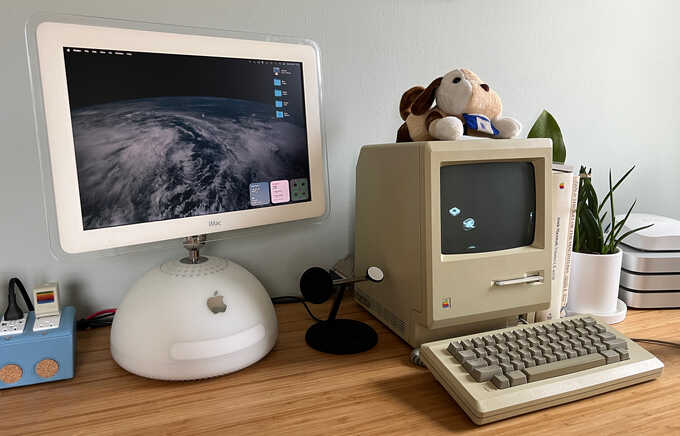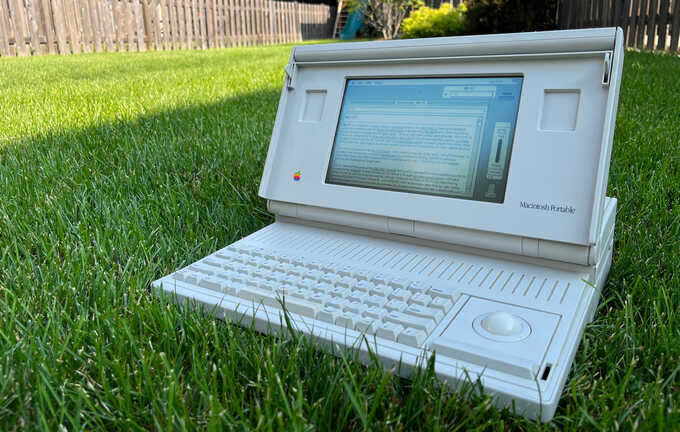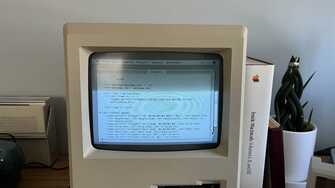BlueSCSI Wi-Fi Desk Accessory 1.4 Released
BlueSCSI Wi-Fi Desk Accessory 1.4 has been released:
This update fixes a bug that was breaking hidden SSID entry.
BlueSCSI Wi-Fi Desk Accessory 1.4 has been released:
This update fixes a bug that was breaking hidden SSID entry.
I found a neat THINK C extension that I wanted to share, and I'm going to have a table at the Vintage Computer Festival Midwest next month.
The KING JIM Pomera DM250 "digital typewriter" is a small Linux-powered ARM computer that boots up into a custom word processor application. I've been tinkering with it to try to get OpenBSD booted on it. I'd normally wait until the end and write up a proper article explaining everything, but this process is taking a lot longer than I expected so I figured I'd document it all as I go.

A year ago I tried using an M1 iMac for work duty but its 21" screen took up too much room on my desk. After seeing Sean's video on Action Retro about putting an M4 Mac Mini inside an iMac G4, I thought I'd give it a try.

Last year I upgraded my Kindle Paperwhite to a Kindle Scribe to be able to write notes and draw diagrams while programming to help visualize things.
One thing that bothered me about the Scribe was that its sleep screen images were pretty boring and because I'm now often reading PDFs or writing in a notebook, I couldn't benefit from the Kindle OS's new functionality that uses the cover of the book being read as the sleep screen image (which previously required a jailbreak and custom software).
Since the process for installing custom sleep screen images is rather cumbersome and the information is scattered across old forum posts, I thought I'd document how I did it to possibly make it easier for someone else.
Another update to Wallops building on the 2.0 release is available:
7cb16046e076488efd1d7145aa4baaf5This update includes a number of new features and bugfixes:
I wanted to add an internal USB port to my ThinkPad X1 Nano which should have been a fairly easy thing to do, but it wasn't.
Of course, if I were still using my Framework Laptop it would be as easy as plugging in a custom module but I've been using my X1 Nano as my primary laptop for quite some time now.

I've been working on Carl, my IMAP e-mail client, for the past few months.
Subtext 4.0 has been released:
c33a6abe15e7f0710f4bdcd08b57b568Wikipedia Reader 1.1 has been released:
14761cefe2552886acd1b9433113237dChanges in this version:
I attended the Vintage Computer Festival Midwest 18 and made some things.
Over the past year or so, I've been working with other BlueSCSI developers to add Wi-Fi functionality to their open-hardware SCSI device, enabling Wi-Fi support for old Macs and other vintage computers going back some 36 years.

I've been operating Pushover's public-facing API for over a decade now and I thought I'd pass on some advice for those creating a new API.
Pushover's API might be unusual in that it is used by a wide range of devices (embedded IoT things, legacy servers, security cameras, etc.) and HTTP libraries, rather than mostly being accessed from JavaScript in the latest web browsers. It also doesn't process sensitive financial information, so the advice given here may not be applicable to something operating like Stripe's API.
Amend 3.7.1 has been released:
2ea2718c890d0c50d1f097d0b144b97eChanges in this version:
As a frequent reader of the retrobattlestations and VintageApple subreddits, I see a lot of photos of CRT screens that show significant scanlines resulting in images like the one on the left.
With a simple post-processing tip on the iPhone (though there is probably a similar technique for Android phones), it's easy to fix this photo after it's been taken so it looks like the one on the right:

